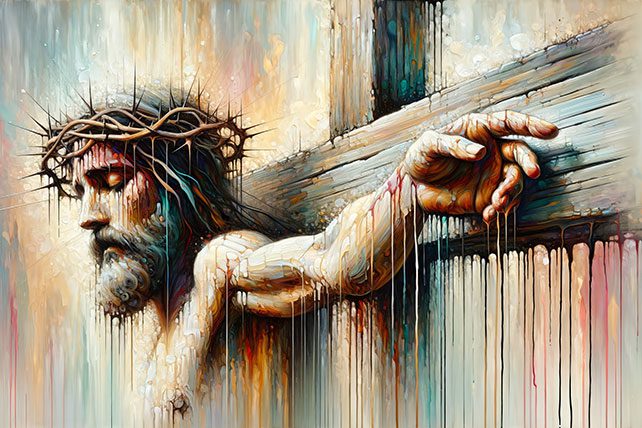One of the more difficult aspects of hermeneutics, when approaching the fourth gospel, is to know how to interpret historical details in a book that clearly includes such literary vehicles as symbolism, typology, and double entendres. The goal of faithful exegesis is to accurately interpret a passage according to its grammatical-historical-theological meaning without imposing on it spiritual insights that are foreign to the authorial intent or failing to capture the redemptive-historical meaning of those details. A case study of this challenge can be found in John 19:33-34, namely, in John’s account of water and blood flowing from the pierced side of Jesus.
Water and Blood Flowing From Jesus’ Side
The Apostle John, having stood at the foot of the cross when Jesus was crucified and died, wrote,
“When they came to Jesus and saw that he was already dead. . .one of the soldiers pierced his side with a spear, and at once there came out blood and water” (John 19:33-34).
The most widely agreed upon interpretation is that which suggests that the outpouring of the blood and the water was demonstrable proof that Jesus really and truly died. Closely connected to that interpretation is the plausible contextual interpretation that has to do with John’s refutation of docetic heresies about the person of Christ in both this gospel and in his first epistle. D.A. Carson explains,
Already by the time this Gospel was written, there were docetic influences at work—influences that became much worse by the time the Epistles of John were written (cf. 1 Jn. 2:22; 4:1–4; 5:6–9). The docetists denied that the Christ was truly a man, Jesus; he only seemed (dokeo̅, ‘it seems’) to take on human form. And by the same token, he never really died; it only appeared to be so. John will have none of it: blood and water flowed from Jesus’ side, and in many strands of both Jewish and hellenistic thought at the time, the human body consists of blood and water.
However, the question still remains as to whether or not John had any theological and spiritual meaning attached to his record of these details. Many scholars are agreed that John wrote this gospel toward the end of his life, as he reflected back on what he had witnessed so many years prior. It is important for us to remember that John says at the end of the gospel, “There are also many other things that Jesus did. Were every one of them to be written, I suppose that the world itself could not contain the books that would be written” (John 21:25). This means that John strategically chose which details to include in his account (most of which are not included in the synoptic gospels) with a highly intentional purpose. This purpose is seen throughout the book to show that Jesus is the fulfillment of so many Old Testament types and prophecies. In this section alone, John has intimated that his details about the crucifixion and death of Christ were intended to fulfill the Old Testament (John 19:24, 28, and 36-37). In keeping with this, it is right for us to seek out a divinely intended spiritual or redemptive-historical interpretation of the blood and water flowing from the pierced side of Jesus.
This passage has been subject to many symbolic readings throughout church history. For instance, Chrysostom and Augustine maintained that water and blood flowing from the pierced side of Jesus represented the spiritual significance of the sacraments of baptism and the Lord’s Supper. Augustine also saw in this act the typology of Christ as the second Adam being put to sleep on the cross in order to receive his bride. He wrote:
When He slept on the Cross, He bore a sign, yea, He fulfilled what had been signified in Adam: for when Adam was asleep, a rib was drawn from him and Eve was created; Genesis 2:21-22 so also while the Lord slept on the Cross, His side was transfixed with a spear, and the Sacraments flowed forth, John 19:34 whence the Church was born. For the Church the Lord’s Bride was created from His side, as Eve was created from the side of Adam. But as she was made from his side no otherwise than while sleeping, so the Church was created from His side no otherwise than while dying.
Calvin assented to the “sacramental analogy” interpretation of water and blood when he wrote:
I do not object to what Augustine says, that our sacraments have flowed from Christ’s side; for, when Baptism and the Lord’s Supper lead us to Christ’s side, that by faith we may draw from it, as from a fountain, what they represent, then are we truly washed from our pollutions, and renewed to a holy life, and then do we truly live before God, redeemed from death, and delivered from condemnation.

